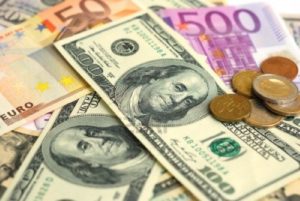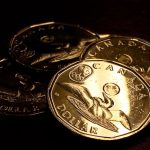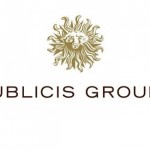 The euro advanced against the US dollar on Tuesday, amid increasing bets ECB will refrain from easing monetary policy at its policy meeting on Thursday, after data last week showed the inflation rate in the euro zone accelerated at a faster-than-expected pace in February.
The euro advanced against the US dollar on Tuesday, amid increasing bets ECB will refrain from easing monetary policy at its policy meeting on Thursday, after data last week showed the inflation rate in the euro zone accelerated at a faster-than-expected pace in February.
EUR/USD hit a session high at 1.3782 at 13:43 GMT, after which the pair traded at 1.3759 by 14:18, adding 0.17% for the day. Support was likely to be found at February 28th low, 1.3694, while resistance was to be encountered at March 3rd high, 1.3793.
Demand for the 18-nation common currency was supported yesterday after the market research group, Markit Economics, revised up its manufacturing index. The gauge, based on a survey among purchasing managers, was revised to a final reading of 53.2 in February, from preliminary estimates of 53, supported by French purchasing managers responses, which signaled manufacturing activity in the country has almost stopped contracting, with corresponding reading of 49.7 in February. Values above the key level of 50.0 are indicative of expansion in activity.
“The pressure felt a month ago that might have led the ECB to be very aggressive this week has somewhat diminished,” said Jacques Cailloux, chief European economist at Nomura International Plc in London, cited by Bloomberg. “Business-cycle information is supporting the story of a modest recovery and inflation is broadly tracking the ECB’s December forecast.”
Eurostat reported on Friday that the cost of living in the euro area grew at an annualized rate of 0.8% in February, the same as in the previous month and exceeding analysts’ projections for a 0.7% increase. The data was preliminary and the final figures for February are scheduled to be released on March 17th.
At the same time, core consumer prices, which exclude volatile items such as food, energy, tobacco and alcohol increased at an annualized rate of 1% in February, exceeding experts’ forecasts for a 0.8% advance and up from January’s 0.8% increase.
However, annual inflation remained less than half the ECB target of 2%, which the central bank uses to define price stability. The inflation rate registered a fifth straight reading under 1%, which was referred by ECB President Mario Draghi as a danger zone. ECB officials forecast in December 2013 that inflation will average 1.1% in 2014.
Mario Draghi refrained from taking action to counter low inflation at ECB latest policy meeting in February, but reiterated last week that central banks officials are “alert” to risks from low inflation and they are “willing and are ready to act”, if risks of deflation strengthen. His comments came after the ECB left its benchmark interest rate at a record-low 0.25% in February. ECB policy makers are set to reconvene on Thursday, March 6th.
Meanwhile, the US dollar capped the worst month in February since September even after Federal Reserve Chair Janet Yellen said the central bank will probably continue with its plan to gradually reduce the scale of monthly asset purchases. At the same time, policy makers will try to determine whether the weakness economy has recently demonstrated is due to temporal factors.
“Unseasonably cold weather has played some role,” she said in her testimony in front of the Senate Banking Committee on Thursday. “What we need to do, and will be doing in the weeks ahead, is to try to get a firmer handle on exactly how much of that set of soft data can be explained by weather and what portion, if any, is due to softer outlook.”
Yellen indicated that the Federal Reserve is abandoning its numerical threshold, that has linked any decision to increase borrowing costs to nation’s rate of unemployment. She also reiterated what the central bank has already said in a number of statements – that the scale back of monetary stimulus will continue at a “measured pace”, while the bond-purchasing program will likely be exited in the fall.
The greenback was supported yesterday after the Institute for Supply Management (ISM) reported that manufacturing activity in the United States expanded at a faster than projected pace in February, which eased concerns that economy may remain vulnerable. The corresponding PMI advanced to a reading of 53.2 last month from 51.3 in January, while analysts had expected that the index will climb less, to 52.0 in February. Values above the key level of 50.0 are indicative of expansion in activity.
Elsewhere, GBP/USD hit a session high at 1.6717 at 08:10 GMT, after which the pair trimmed daily gains to trade little changed at 1.6676 at 10:14 GMT, adding 0.06% for the day. Support was likely to be received at February 27th low, 1.6617, while resistance was to be met at March 3rd high, 1.6751.





